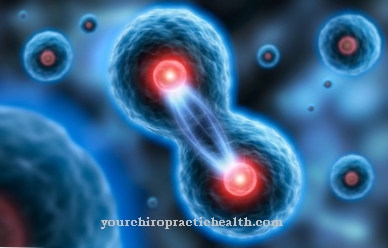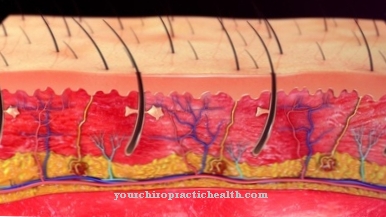To run is a type of human locomotion in which the feet move forward quickly and both feet are lifted off the ground for a brief moment. Running is considered the oldest sport in the world.
What is running

Your personal running style decides whether your feet touch down first with the heel, midfoot or forefoot. Regular running is practiced in leisure time or within the framework of athletics as an Olympic discipline. National and international competitions are held for precisely defined, different running disciplines. The general classic running disciplines include sprint, middle distance, long distance, marathon and hurdles. Walking is also classified as a curiosity in athletics as a running discipline.
In many team sports such as soccer, handball or volleyball, running is also a necessary component. This also applies to sports that require one or two opponents, for example tennis in singles or doubles and badminton.
Casual running in leisure time is often referred to as jogging. In a cross-country run, the run takes place off-road in open terrain. In some cases, the nature of the experience plays a major role in this type of running when attractive sections of the landscape are crossed. In the so-called mountain run, large differences in altitude have to be overcome.
Function & task
When running, over 60 percent of the muscles are activated. With every step, the muscles and joints of the legs are particularly stressed because they have to withstand several times the body weight when they come into contact with the ground.
Regular running exercises firm and strengthen muscles, tendons and bones, thereby increasing resistance and performance. Frequent running promotes the replication of the finest vessels in the stressed and more blood-supplied areas of the body. The supply and functionality of vital organs, muscles and skin are protected and improved. Being able to move around quickly by running also enables people to react better in dangerous situations. The fact that longer distances can be covered while running, the mobility of the person is advantageously increased.
The load on the feet varies depending on the running style and appearance. The first time the ball of the foot comes into contact with the ball, the Achilles tendon and the [[foot sole tendon] are subjected to great stress. When stepping on with the heel, the physical forces mainly affect the heel and the knee. Due to the additional stress on the intervertebral disc, suitable running shoes have a positive effect that is gentle on them.
Due to the constant alternation between pressure and relief, the cartilage tissue receives additional nutrients to build up. The micro-cracks caused by the impacts while walking lead to a denser and more stable bone substance through the regeneration process.
Before you start running, you should do a thorough, individual preparation to ensure the positive effects of running. This includes the selection of the right running shoes using a treadmill analysis. With the help of a functional motion analysis, further valuable conclusions can be drawn.
When running, the running style, body posture and breathing technique are also of interest for optimal running. Age and personal health and training status should be given due consideration. A medical fitness test can also make sense. Beginners in particular should start moderately and not go to the limit. Measurements of pulse and blood pressure can serve as important guidelines.
Regular, appropriate running training, especially outdoors, strengthens the heart muscle. It prevents tissue weaknesses in the blood vessels and increases oxygen uptake and blood flow to the lungs. In addition, the leg muscles and the physical condition are strengthened.
In addition, the metabolism is stimulated and the immune system is strengthened. Especially with regular running in the aerobic area (energy conversion through oxygen) the increased fat burning ensures a weight reduction after about 30 minutes. The prerequisite for this, however, is that the benefits of running are not offset by a counterproductive diet. When running, the carbohydrate store is primarily used to provide energy for the first half hour.
Running is also effective for blood quality and pressure, while regulating blood sugar and cholesterol levels. Continuous running is also beneficial for well-being and the soul through the activation of endorphins (the body's own morphines) such as the messenger substance serotonin, which is also known as the happiness hormone. Sunlight can also contribute to well-being while running. Therefore, running can also counteract depression.
Running promotes physical and mental health, is inexpensive and easy to do. As a balance to everyday life and an experience of nature, running is also considered varied. Running in groups of like-minded people can also encourage social interaction. Regular running is helpful for performance and can help reduce existing aggressions. It can also lead to greater self-confidence.
Running offers a great opportunity for the widespread desire to lose weight. During regular running training, attention should be paid to periods of sufficient regeneration so as not to impair the beneficial effects of running.
Illnesses & ailments
An incorrect selection of running shoes can lead to discomfort. For example, poor cushioning properties in running shoes, especially on hard flooring such as concrete, stone or tar, can lead to painful impairment of the joints, ligaments, muscles and vertebrae. The knee in particular is often affected by painful effects. In the long run, however, intervertebral discs and hips also suffer from excessive shock loads with the wrong running shoes and running technique.
Inadequate regeneration times between runs, overloading from running or eating the wrong diet can lead to symptoms of overload. Climatic stimuli or illnesses can also be responsible for this. These overloads can present themselves as a drop in performance, reduced resilience, rapid fatigue and discomfort. Especially after a long period of abstinence from training, excessive zeal at the beginning of a running training can threaten to be overwhelmed.
If you run too fast, the energy supply does not come from oxygen, but from lactic acid. However, muscle soreness does not occur due to the lactic acid formed. Rather, it occurs with a time delay when the muscle tissue is overloaded (especially with beginners). This creates tiny tears in the muscle fibers and blood vessels, which present themselves as painful inflammations and swellings. As a result, the elasticity is restricted for a certain period of time.
Uncorrected foot misalignments or a problematic running style can be the reason for painful foot complaints such as heel spurs. The effects can also affect the knees and spine. Running problems can also occur in the form of irritation of the Achilles tendon, side stitches and strains as well as cramps and ligament strains.
Overloading while running can also pose a risk to the heart. There is a possibility of dangerous circulatory problems, especially with existing diseases in this area, overweight and in extreme heat. Therefore, as a preventive measure, the carbohydrate stores should be filled as well as possible before running.
If there are some complaints or requirements, it is advisable not to run:
- Weakening of the immune system due to a flu-like effect
- Obesity
- Muscle or joint injury, as well as back pain or a stress fracture
- Severe fatigue, alcohol consumption
- Identified heart disease, very high blood pressure
- Extremely high outside temperatures and humidity
- Eating large quantities before the planned run




.jpg)








.jpg)

.jpg)
.jpg)











.jpg)